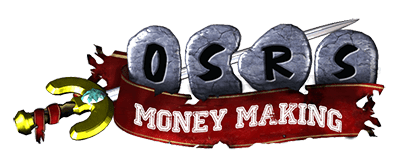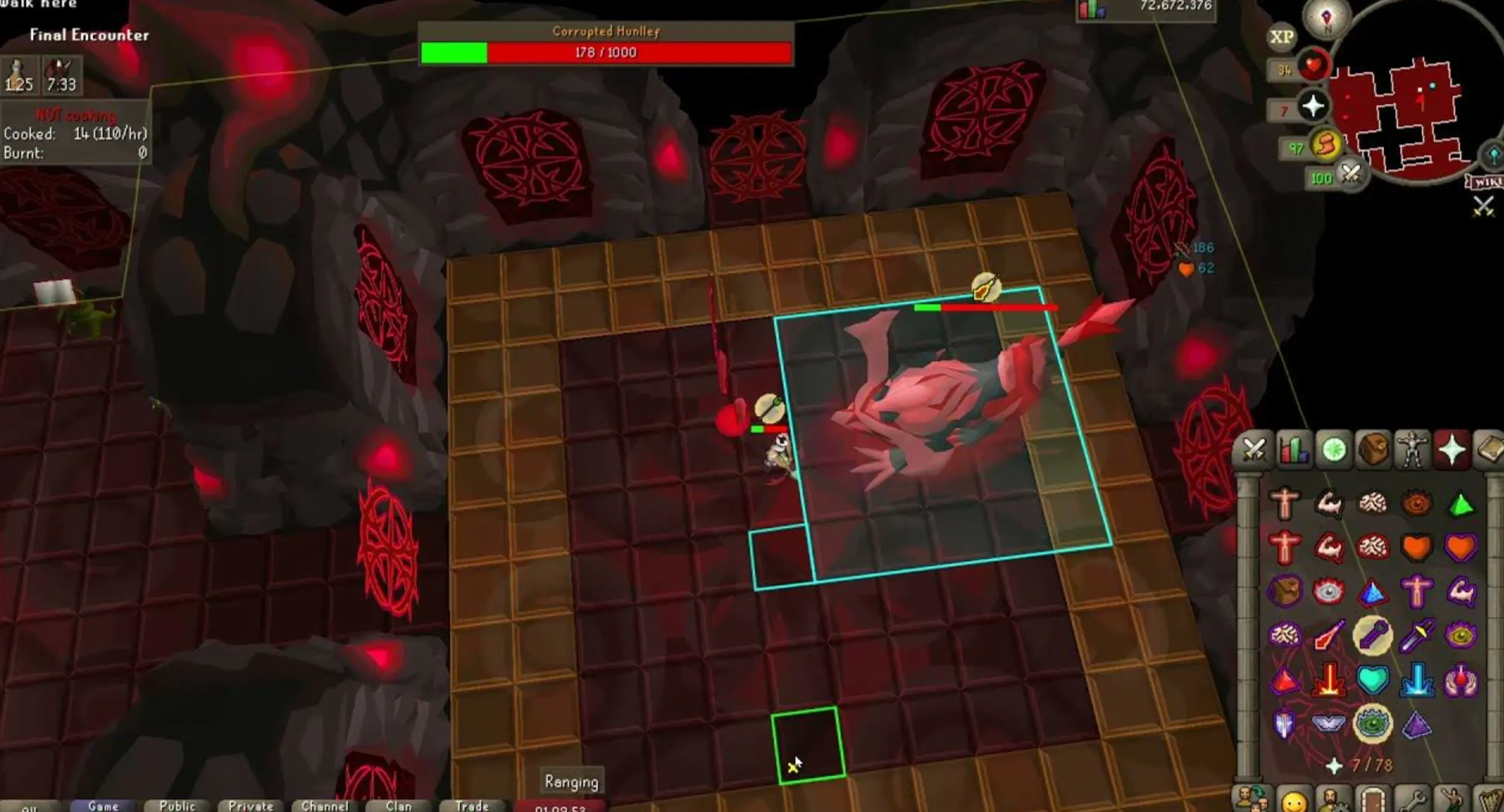Your cart is empty
OSRS Combat Gear Guide for All Levels

Old School RuneScape (OSRS) combat is a grind, but picking the right gear can make or break your experience. Whether you’re a newbie smacking goblins in Lumbridge or a seasoned player tackling high-level bosses like Zulrah, your gear choices matter. I’ve been playing OSRS for years, and let me tell you, I’ve made some dumb gear mistakes along the way. From wearing mismatched armor to wasting millions on gear I didn’t need, I’ve learned what works through trial and error. This guide will walk you through the best combat gear for melee, ranged, and magic, tailored to different levels and budgets. Let’s dive in and make sure you’re ready to slay.
Your combat gear isn’t just about looking cool (though that’s a bonus). It directly impacts your damage output, defense, and survivability. When I started, I thought I could just wear whatever looked shiny and call it a day. Big mistake. I got wrecked by Hill Giants because I didn’t understand how bonuses work. Gear in OSRS boosts your accuracy, damage, and defense stats, and picking the right setup depends on your combat style, budget, and what you’re fighting.
Quick tip: Always check the monster‘s weaknesses before gearing up. Some bosses are weak to magic, others to melee. Get this wrong, and you’ll be chugging more food than a competitive eater.
Understanding Combat Styles
OSRS has three main combat styles: Melee, Ranged, and Magic. Each has its own gear, strengths, and weaknesses. Melee is great for close-quarters combat, Ranged lets you attack from a distance, and Magic is perfect for spell-casting and utility. I usually mix and match depending on the task. For example, when I was grinding Slayer tasks at level 60, I stuck with Melee for most low-level monsters but switched to Ranged for anything with high melee defense.
Which style do you use most? If you’re unsure, try all three in the Nightmare Zone to get a feel.
Melee Gear Progression
Melee is the bread and butter of OSRS combat. It’s straightforward, hits hard, and is usually the cheapest to gear up for. Here’s a breakdown of the best melee gear for different levels and budgets.
Early Game (Levels 1-40)
When you’re just starting, your options are limited, but you can still pack a punch. Back in my noob days, I ran around in iron armor thinking I was invincible. Spoiler: I wasn’t. Here’s what you should aim for:
-
Weapon: Use the highest-tier scimitar you can wield (Iron at level 1, Steel at 5, Black at 10, Mithril at 20, Adamant at 30, Rune at 40). Scimitars are fast and great for training.
-
Armor: Full iron or steel armor is fine. If you can afford it, grab a Black armor set from the Grand Exchange for better defense.
-
Amulet: Amulet of Strength gives a nice boost to your damage. I got mine early on, and it made killing cows way faster.
-
Accessories: Combat bracelet or gloves from the Culinaromancer’s Chest if you’ve started Recipe for Disaster.
Pro tip: Train at Sand Crabs on Zeah. They have high HP, low defense, and barely hit back. Perfect for leveling up fast.
Mid Game (Levels 40-70)
At this stage, you’re ready for tougher fights like Slayer tasks or early bosses. I remember hitting level 50 and feeling like a god with my Rune armor. Here’s what to aim for:
-
Weapon: Rune Scimitar or Dragon Scimitar (requires Monkey Madness I). The Dragon Scim is a game-changer with its higher strength bonus.
-
Armor: Full Rune armor is solid, but if you can afford it, Granite armor (like the Granite Platebody) offers better defense. I used Granite for Slayer tasks and it saved me a ton of food.
-
Helmet: Berserker Helm from the Fremennik Trials quest is a must for its strength bonus.
-
Boots: Climbing Boots are cheap, but Dragon Boots are worth the investment if you have the cash.
|
Gear Slot |
Budget Option |
Mid-Tier Option |
Notes |
|---|---|---|---|
|
Weapon |
Rune Scimitar |
Dragon Scim needs 60 Attack and Monkey Madness I |
|
|
Armor |
Rune Armor |
Granite Armor |
Granite is heavier but tankier |
|
Amulet |
Glory gives small boosts to all stats |
End Game (Levels 70+)
Now you’re in the big leagues. This is where I started tackling bosses like the Giant Mole and Bandos. High-level melee gear is expensive, but the power spike is worth it.
-
Weapon: Abyssal Whip or Saradomin Sword for general use. For bosses, Blade of Saeldor or Ghrazi Rapier are top-tier but cost millions.
-
Armor: Bandos Armor (Chestplate and Tassets) for strength bonuses. If you’re on a budget, Fighter Torso from Barbarian Assault is free and amazing.
-
Helmet: Neitiznot Faceguard is the best for strength and defense.
-
Amulet: Amulet of Torture for max damage or Amulet of Fury for balanced stats.
Ever tried Bandos solo? It’s a grind, but the right gear makes it manageable. I died a few times before figuring out my setup.
Ranged Gear Progression
Ranged is my go-to for Slayer and bosses with high melee defense. It’s also great for safe-spotting. When I was grinding for 70 Ranged, I spent hours at the Ogres in the Castle Wars area, and the right gear made it so much easier.
Early Game (Levels 1-40)
-
Weapon: Shortbow (Oak, Willow, or Maple depending on your level). Use Iron Arrows or Steel Arrows for better damage.
-
Armor: Leather Armor or Hardleather Body. Upgrade to Green D’hide Armor at level 40 Ranged.
-
Amulet: Amulet of Accuracy is cheap and boosts your hit chance.
-
Cape: Ava’s Attractor (requires Animal Magnetism) saves arrows and makes life easier.
Fun fact: I once forgot to equip Ava’s Attractor and burned through 500 arrows in an hour. Don’t be me.
Mid Game (Levels 40-70)
This is where Ranged starts to shine. You can take on tougher Slayer tasks or early bosses like King Black Dragon.
-
Weapon: Magic Shortbow with Rune Arrows or Mithril Arrows. The special attack is great for burst damage.
-
Armor: Blue D’hide Armor or Black D’hide Armor. Black D’hide is pricier but worth it for the defense.
-
Boots: Snakeskin Boots are affordable and give a small Ranged bonus.
-
Amulet: Amulet of Glory or Amulet of Power for balanced stats.
End Game (Levels 70+)
High-level Ranged gear is a game-changer for bosses like Zulrah or raids. I remember my first Zulrah kill I barely survived because I had subpar gear. Here’s the good stuff:
-
Weapon: Toxic Blowpipe is king for most content. For long fights, Armadyl Crossbow with Diamond Bolts (e) is amazing.
-
Armor: Armadyl Armor for the best Ranged bonuses. If that’s too pricey, Black D’hide or Karil’s Armor works.
-
Amulet: Necklace of Anguish for max Ranged damage.
-
Cape: Ava’s Assembler is the best for arrow conservation and bonuses.
|
Gear Slot |
Budget Option |
High-End Option |
Notes |
|---|---|---|---|
|
Weapon |
Magic Shortbow |
Toxic Blowpipe |
Blowpipe needs Zulrah scales and darts |
|
Armor |
Black D’hide |
Armadyl Armor |
Armadyl is super expensive but worth it |
|
Amulet |
Necklace of Anguish |
Anguish is a big upgrade for damage |
Magic Gear Progression
Magic is tricky but powerful. It’s great for utility (teleports, alchemy) and combat, especially against monsters weak to spells. My first time using Magic was at the Chaos Druids, and I was amazed at how fast I could kill them with the right setup.
Early Game (Levels 1-40)
-
Weapon: Elemental Staff (like Staff of Air) saves runes. Use Wind Strike or Fire Strike for training.
-
Armor: Wizard Robes or Mystic Robes at level 20 Magic. Mystic gives a nice magic bonus.
-
Amulet: Amulet of Magic is dirt cheap and boosts accuracy.
Quick question: Ever tried splashing for Magic XP? It’s boring but super AFK.
Mid Game (Levels 40-70)
At this point, you can start using stronger spells like Fire Bolt or Iban’s Blast (requires Underground Pass).
-
Weapon: Iban’s Staff is amazing for its powerful spell. Otherwise, stick with a Mystic Staff.
-
Armor: Mystic Robes or Ahrim’s Robes if you can afford Barrows gear.
-
Amulet: Amulet of Glory or Amulet of Magic.
End Game (Levels 70+)
High-level Magic gear is crucial for bosses like Zulrah or raids. I spent weeks saving for my Occult Necklace, and it was worth every GP.
-
Weapon: Trident of the Seas or Sanguinesti Staff for high-damage spells. Kodai Wand is top-tier but pricey.
-
Armor: Ahrim’s Robes or Ancestral Robes for max magic bonuses.
-
Amulet: Occult Necklace for a huge damage boost.
-
Cape: Imbued God Cape from the Mage Arena II.
Tips for Choosing Gear
Picking the right gear depends on a few things. Here’s what I’ve learned over the years:
-
Know Your Enemy: Check the Wiki for monster weaknesses. Some bosses, like Zulrah, require switching between styles.
-
Balance Budget and Power: Don’t blow all your GP on one piece of gear. I once sold everything for a Bandos Chestplate and had no money for food or potions. Bad move.
-
Upgrade Gradually: Start with budget gear and work your way up. Every little upgrade helps.
-
Train Smart: Use Slayer or Nightmare Zone to level up efficiently while testing gear.
What’s your favorite gear setup? I’m curious to hear what other players are rocking!
Common Mistakes to Avoid
I’ve made plenty of mistakes, and I don’t want you to repeat them. Here are some big ones:
-
Ignoring Bonuses: Don’t just equip the highest-defense armor. Check strength and attack bonuses too.
-
Overloading on Defense: Tanky armor is great, but if you’re not hitting hard, fights take forever.
-
Forgetting Food and Potions: Gear is only half the battle. Always bring enough food and stat-boosting potions.
Final Thoughts
Getting the right combat gear in OSRS takes time, but it’s so rewarding. Whether you’re slashing through Slayer tasks or taking down bosses, the right setup makes all the difference. I’ve gone from a noob in mismatched armor to someone who can hold their own in raids, and trust me, it’s a journey worth taking. Start with what you can afford, upgrade as you go, and don’t be afraid to experiment. What’s your next gear goal? Let me know, and happy slaying!

